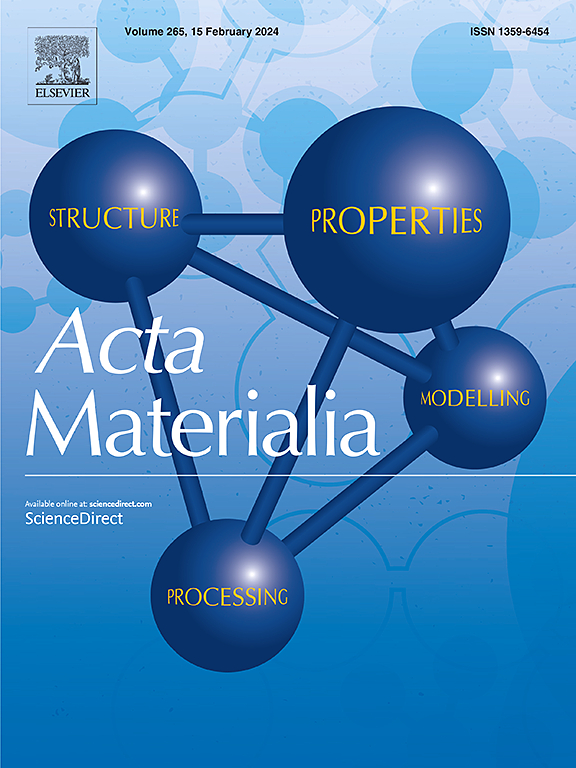Time evolution of Kirkendall porosity in single-phase Ni-based diffusion couples
IF 8.3
1区 材料科学
Q1 MATERIALS SCIENCE, MULTIDISCIPLINARY
引用次数: 0
Abstract
The development of the Kirkendall porosity was studied in fcc Ni–30Cr/Ni–10Si diffusion couples at 1176 °C using X-ray tomography, optical and scanning electron microscopy, and multicomponent diffusion simulation. Diffusion experiments were interrupted multiple times to monitor the porosity ex situ by tomography. This allowed tracking the position and size of thousands of pores over tens of hours. Pores detected by tomography were also observed by microscopy to determine the surrounding grain structure. The porosity depth profiles (number density, equivalent diameter, area/volume fraction) derived from 2D cross-sectional observations and 3D tomography were compared and the benefits of both methods discussed. Alloys of different grain sizes were used as starting materials to study the influence of the grain boundary density on the spatial pore distribution. Local analysis showed that pore nucleation was not significantly accelerated on grain boundaries compared to the grain interior, but that pore growth was faster along grain boundaries. The time-resolved pore distribution data indicated that the porosity evolved through both pore movement and growth-shrinkage. These mechanisms were discussed in view of the simulated vacancy flux profile.


单相ni基扩散偶联中Kirkendall孔隙率的时间演化
采用x射线断层扫描、光学显微镜、扫描电镜和多组分扩散模拟等方法研究了fcc Ni-30Cr / Ni-10Si扩散偶在1176℃下的Kirkendall孔隙度的发展。扩散实验多次中断,通过层析成像监测孔隙度。这可以在几十小时内跟踪数千个毛孔的位置和大小。用断层扫描检测到的孔隙也用显微镜观察,以确定周围的晶粒结构。对比了2D剖面观测和3D层析成像得到的孔隙度深度剖面(数量密度、等效直径、面积/体积分数),并讨论了两种方法的优点。以不同晶粒尺寸的合金为起始材料,研究了晶界密度对孔隙空间分布的影响。局部分析表明,晶界上的孔隙成核速度没有明显加快,但晶界上的孔隙生长速度更快。时间分辨孔隙分布数据表明,孔隙度的演化过程包括孔隙运动和生长收缩。根据模拟的空位通量分布,讨论了这些机理。
本文章由计算机程序翻译,如有差异,请以英文原文为准。
求助全文
约1分钟内获得全文
求助全文
来源期刊

Acta Materialia
工程技术-材料科学:综合
CiteScore
16.10
自引率
8.50%
发文量
801
审稿时长
53 days
期刊介绍:
Acta Materialia serves as a platform for publishing full-length, original papers and commissioned overviews that contribute to a profound understanding of the correlation between the processing, structure, and properties of inorganic materials. The journal seeks papers with high impact potential or those that significantly propel the field forward. The scope includes the atomic and molecular arrangements, chemical and electronic structures, and microstructure of materials, focusing on their mechanical or functional behavior across all length scales, including nanostructures.
 求助内容:
求助内容: 应助结果提醒方式:
应助结果提醒方式:


